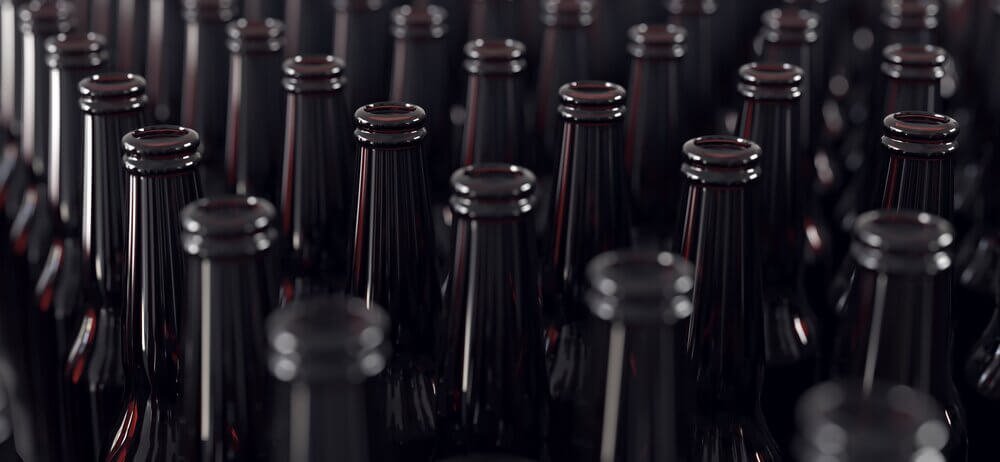Have a cold one, on us.
Bottle maker turns to rental chillers to cool their process when production heats up.
As the summer months start to heat up and our thoughts turn to enjoying an ice- beer in the sun, the last thing you’re probably thinking about is how that beer maker is keeping up with demand, and how all the links in that supply chain are working to make sure that when you’re ready to crack open a cold one, that it’s there for you to grab.
It takes a lot of heat to make a bottle.
There’s a lot that goes into that bottle of beer beyond the amber liquid inside. For example, when demand skyrockets along with summer temperatures, the manufacturers that make the bottles need to keep up as well, and that can be a sticky challenge.
When production inside a bottle manufacturing plant needs to increase, it’s not as easy as turning up a dial. Making glass involves a lot of heat. The heat turns the mixed sand, silica, limestone, and recycled glass up to a molten state and is transferred to every surface in the manufacturing process, including the molds that turn the molten glass from a slug of the hot liquid to a fully formed bottle. Increasing the rate of production doesn’t give these surfaces time to cool adequately and those surfaces radiate heat to the air which means the glass can’t cool at the correct rate—and that has a negative impact on the product quality. So what to do when you have to increase output but can’t afford to sacrifice quality? You bring in the cooling experts at Temperature Control Rental Services.
After consulting with our client, the largest bottle producer in North America based near Toledo, Ohio, to better understand their process and the challenges that increased production was causing, we identified several points in their process where we could apply our cooling technology to overcome their overheating issues.
In their existing cooling system, water from their cooling tower was circulated through a loop and the resultant chilled air was circulated by a fan. Under normal circumstances, there was enough of a difference in the temperature of the water from the cooling tower and the ambient air to have a cooling effect, but the combination of higher ambient temperatures due to summer heat and the heat buildup caused by increased production meant that the cooling tower couldn’t keep up. The coils were too far downstream from the fans, so the water just never got cold enough to cool the air being pushed by the fans.
Our solution was to choose two strategic points in their system:
The first area we attacked was called the Gunboat. The gunboat is what bottle makers call the part of the production line that carries all of the bottle-making molds. The slugs of molten glass are fed into the mold and compressed air is used to expand the slug into the shape of the bottle. In order for bottles to take shape properly, the air temp in this part of the factory needed to be at a consistent 60-65°F. But as we mentioned, when production is increased, all the hot glass moving into the gunboat increases the ambient temp to well over 100°F.
Similarly, in an area called the Dead Plate Manifold, which is the conveyor that transports the newly formed bottles to the next stage in the manufacturing process, air temps were too high, affecting the way the bottles cooled and solidified, causing quality issues. Too cool and the glass would crack from thermal shock. Too hot and the glass might slump or deform. Temperatures had to be just right, even when increased production could elevate air temperatures.
In both cases, our recommended solution was to introduce new coils at the blower intake through which chilled water provided by our Rental-Ready air-cooled chillers could circulate to pre-chill the air before it was sent downstream to the dead plate manifold and the gunboats. Temperature sensors after the second coil inline helped us maintain water flow as needed to maintain their goal temps--no more guesswork.
Our solution allowed the manufacturer to hit their target temps and still increase output by an amazing 15 thousand bottles PER DAY. That’s 625 additional cases of beer bottles every day. That’s a lot of suds.
So the next time you want to quench your thirst on a hot summer day, just remember that it took cooled air from Temperature Control Rental Services to bring you that ice-cold beer. You’re welcome.


